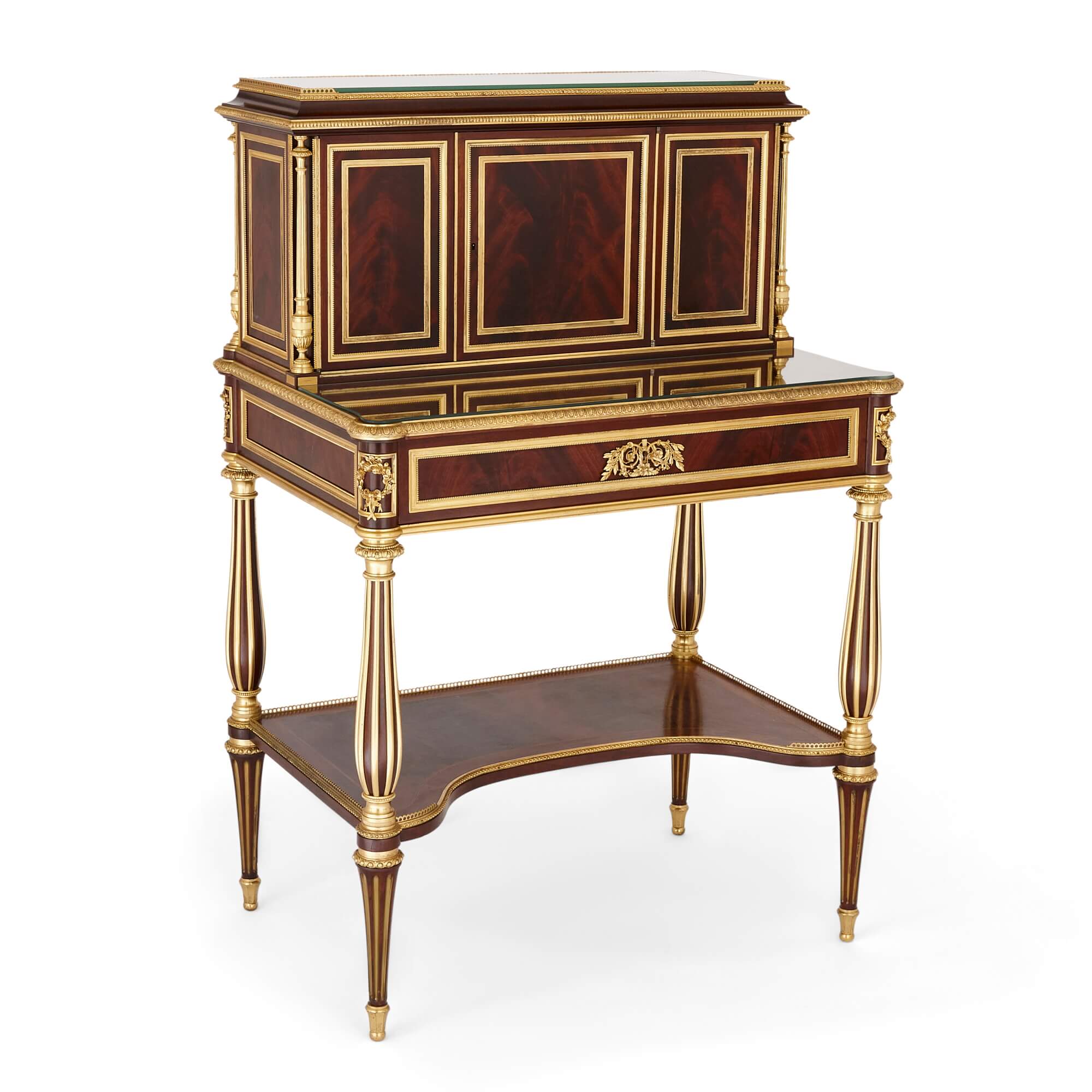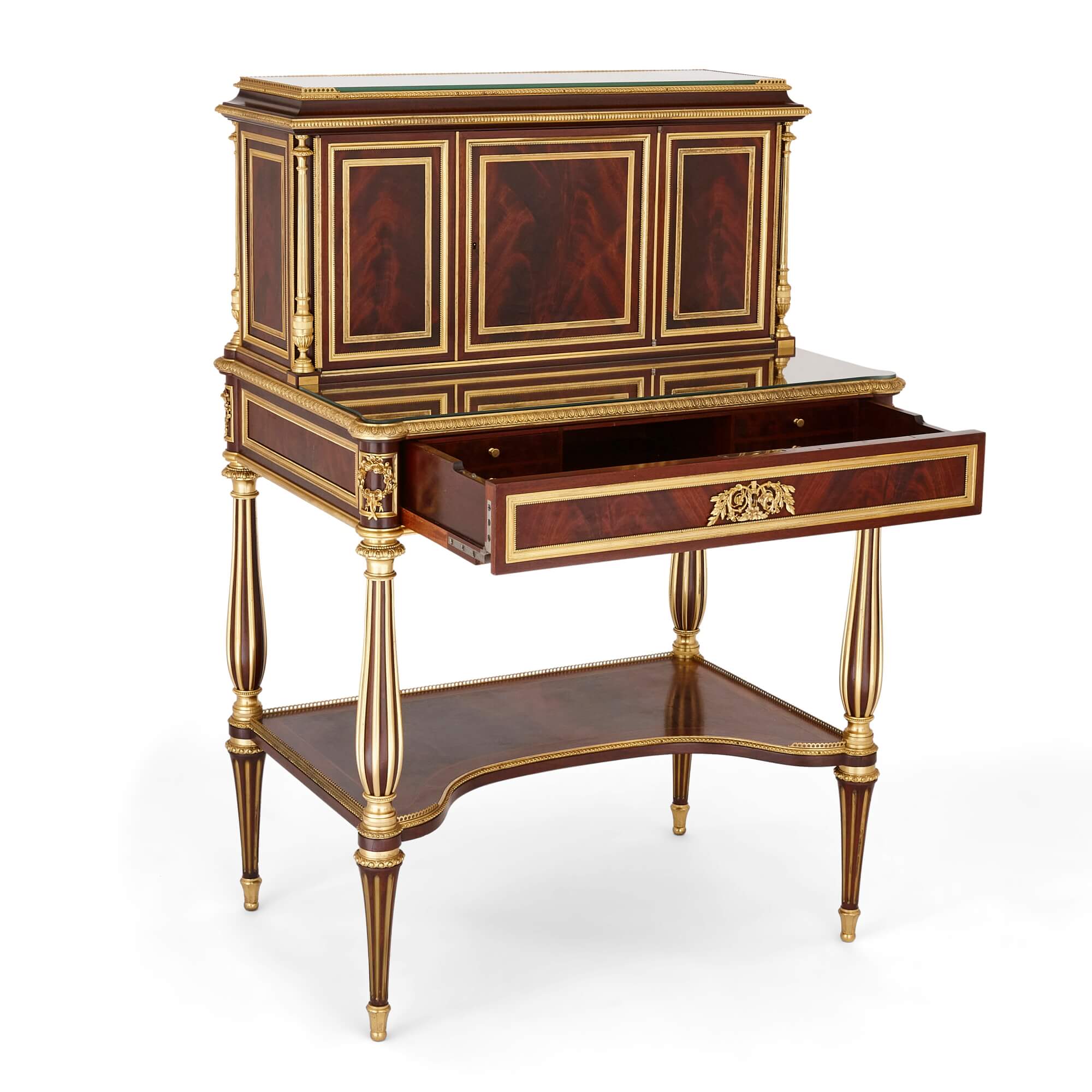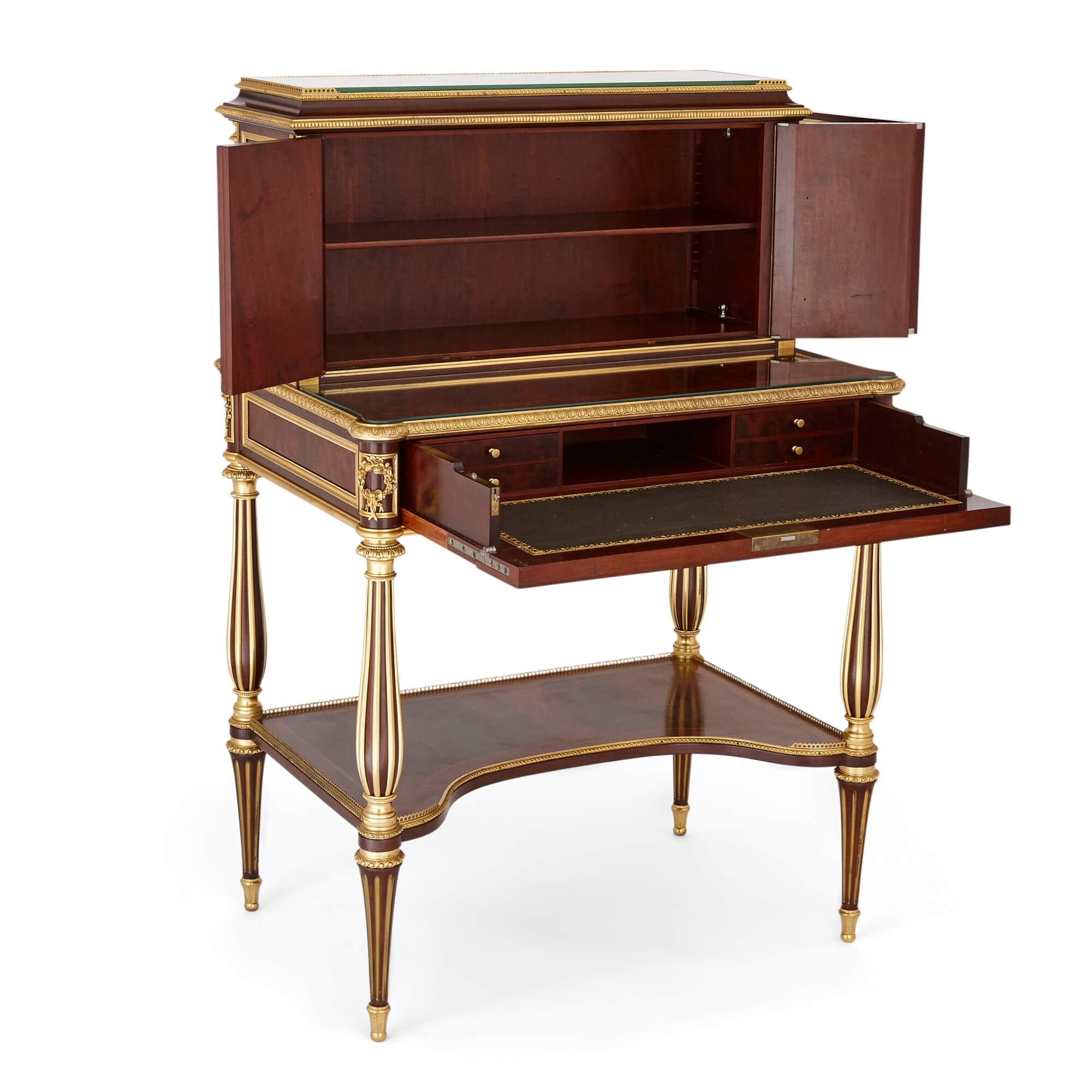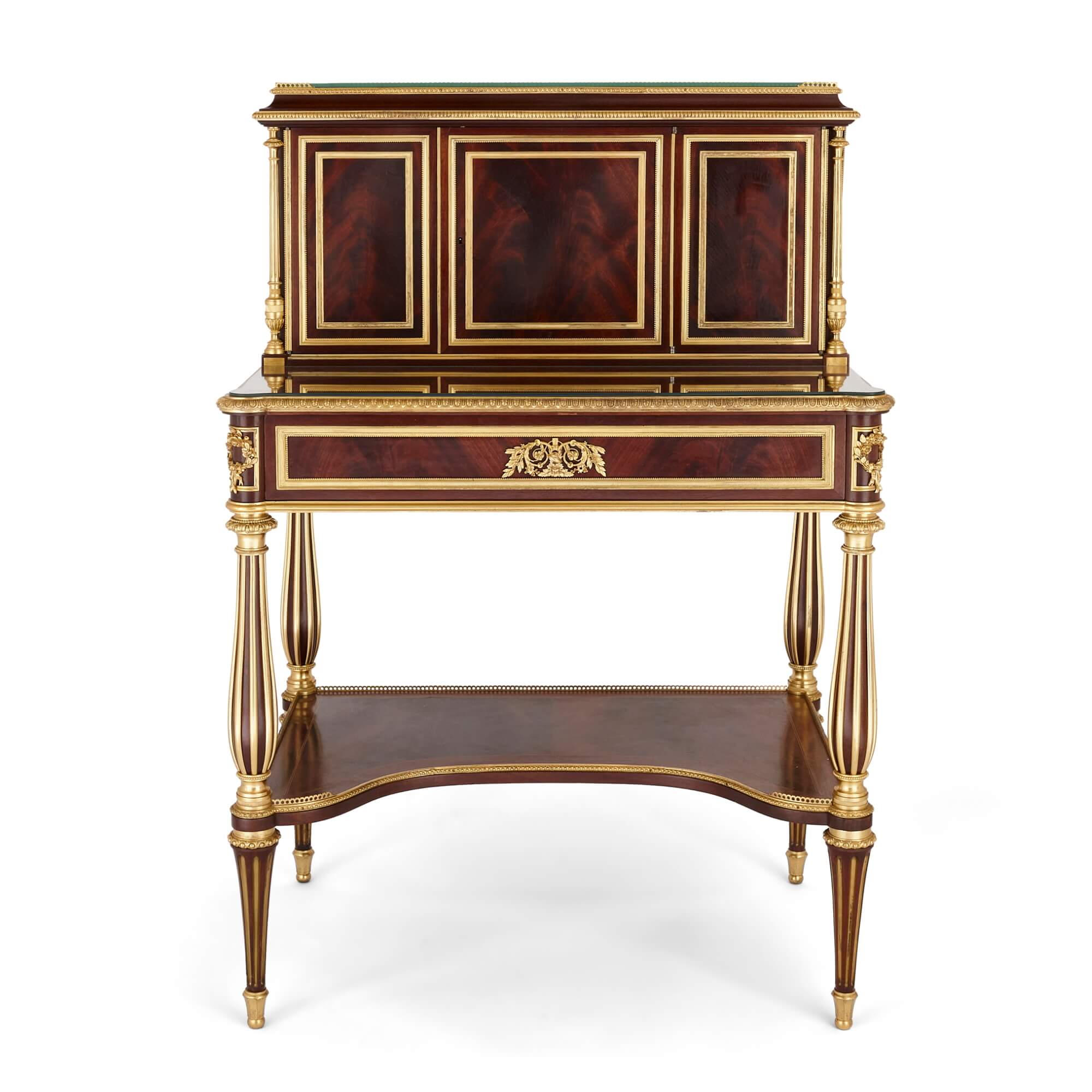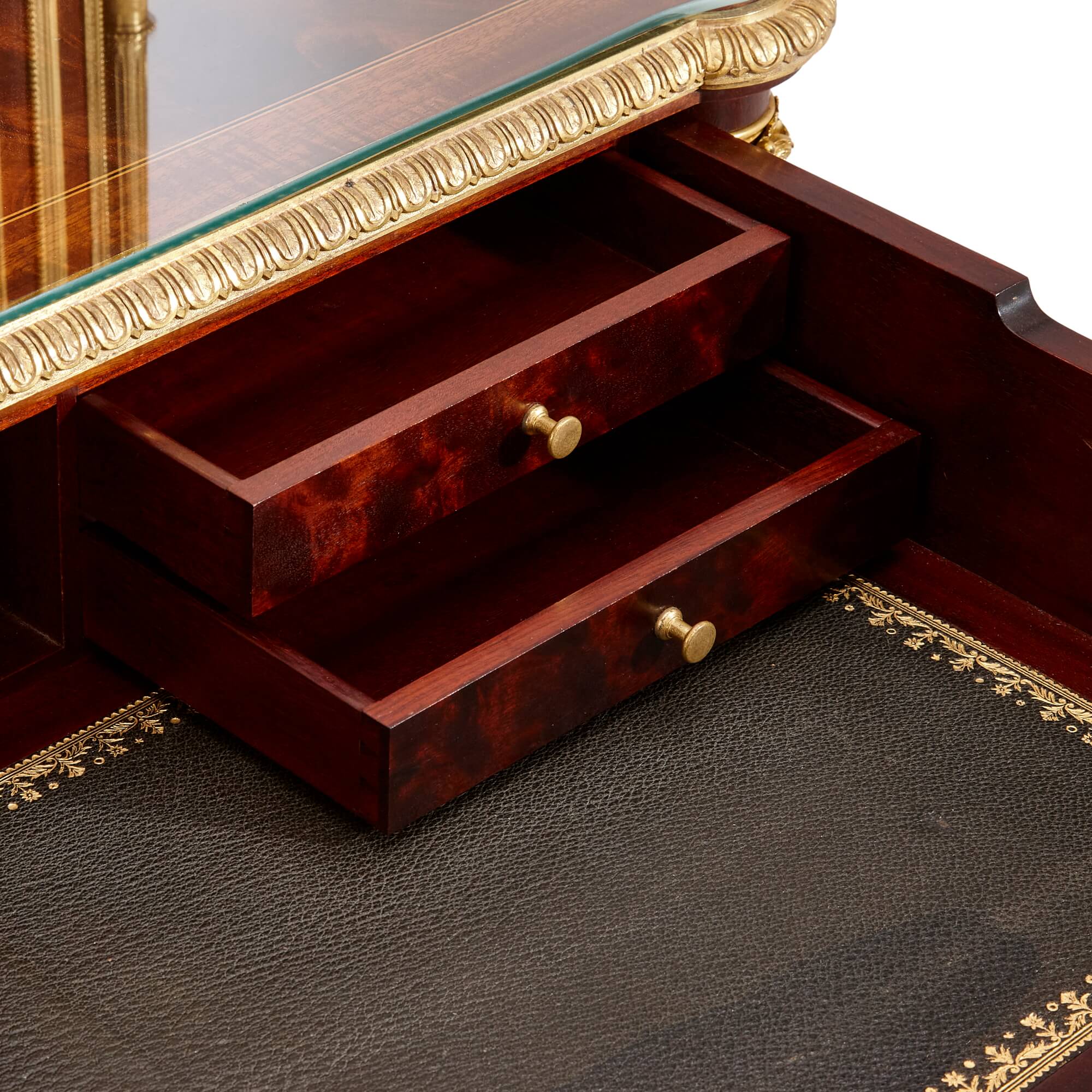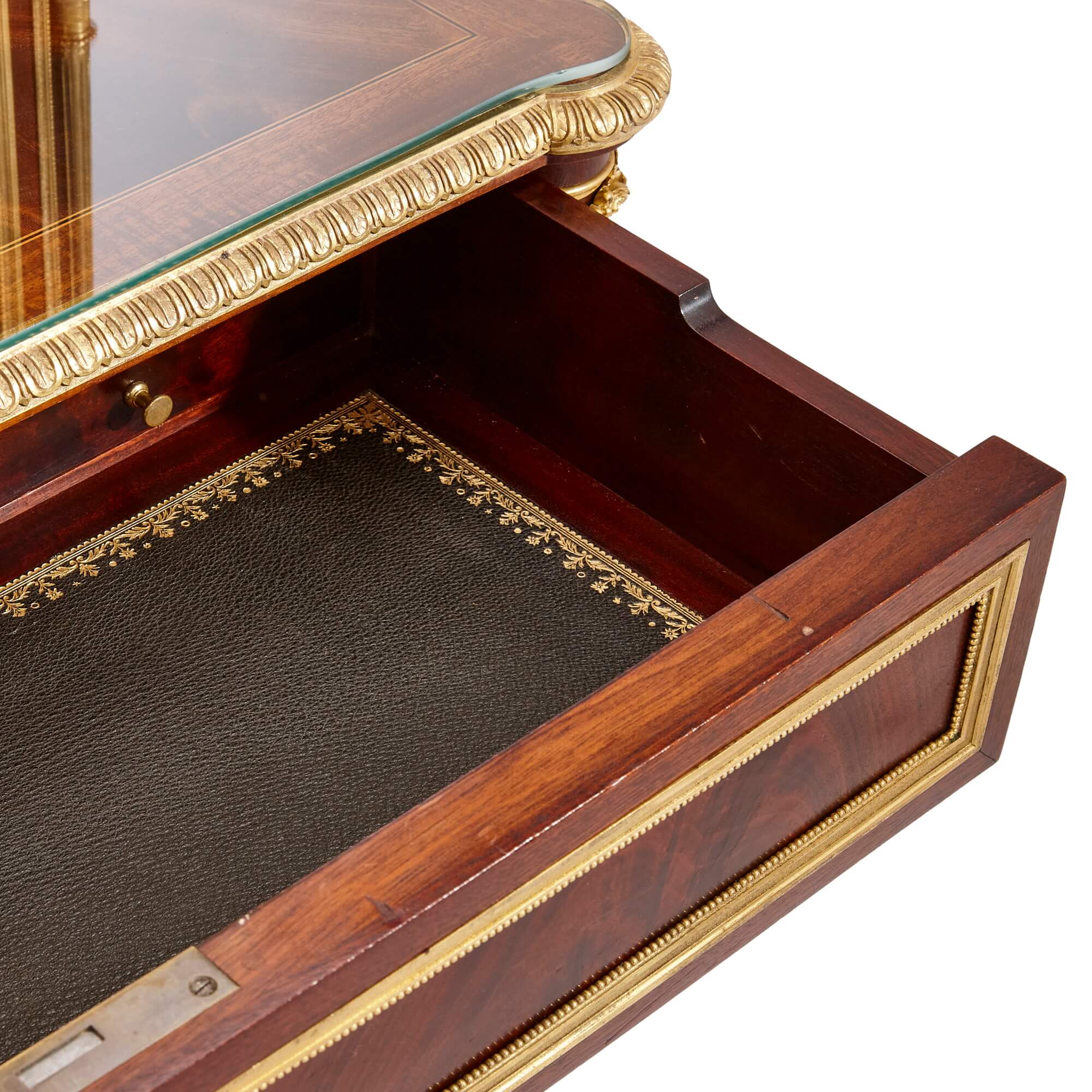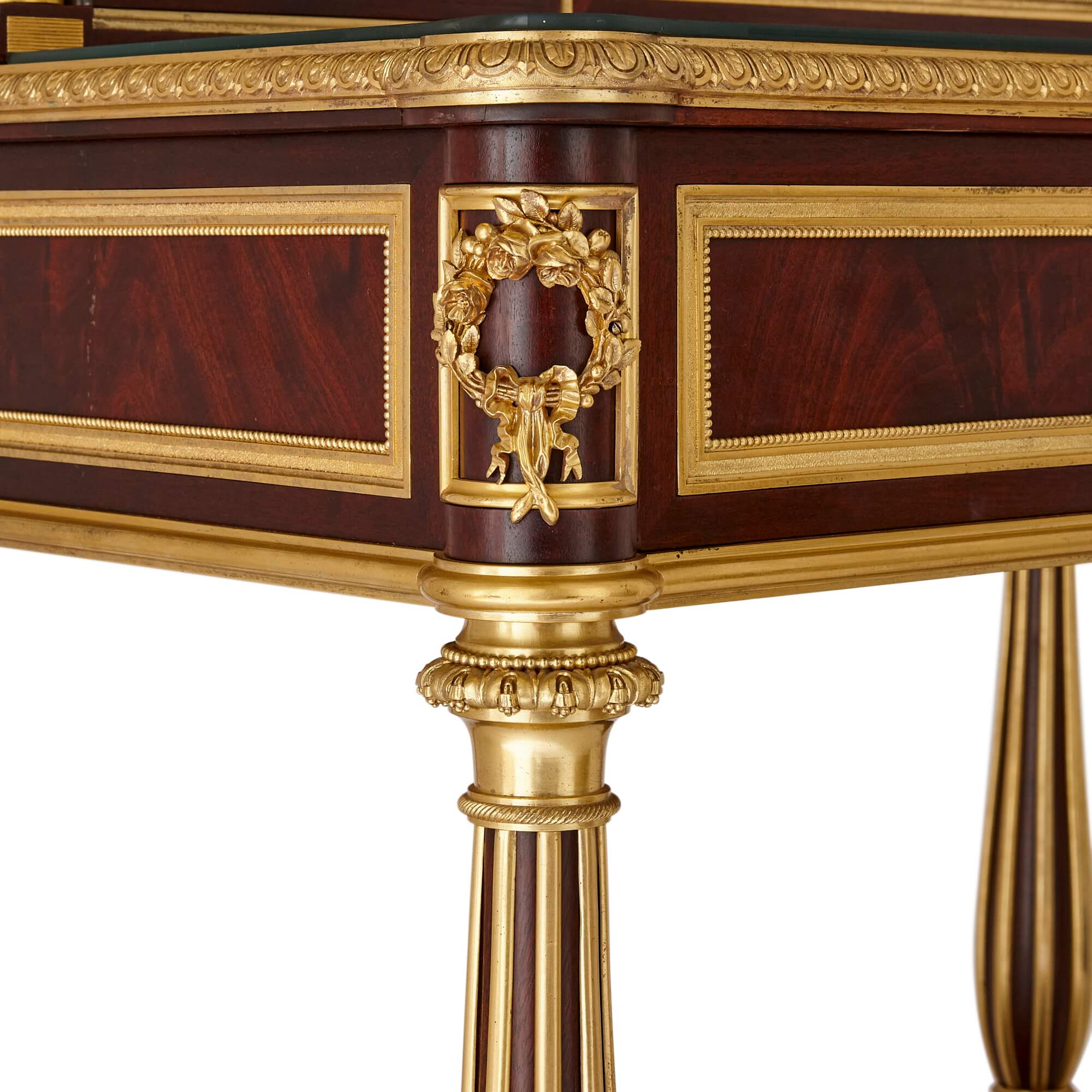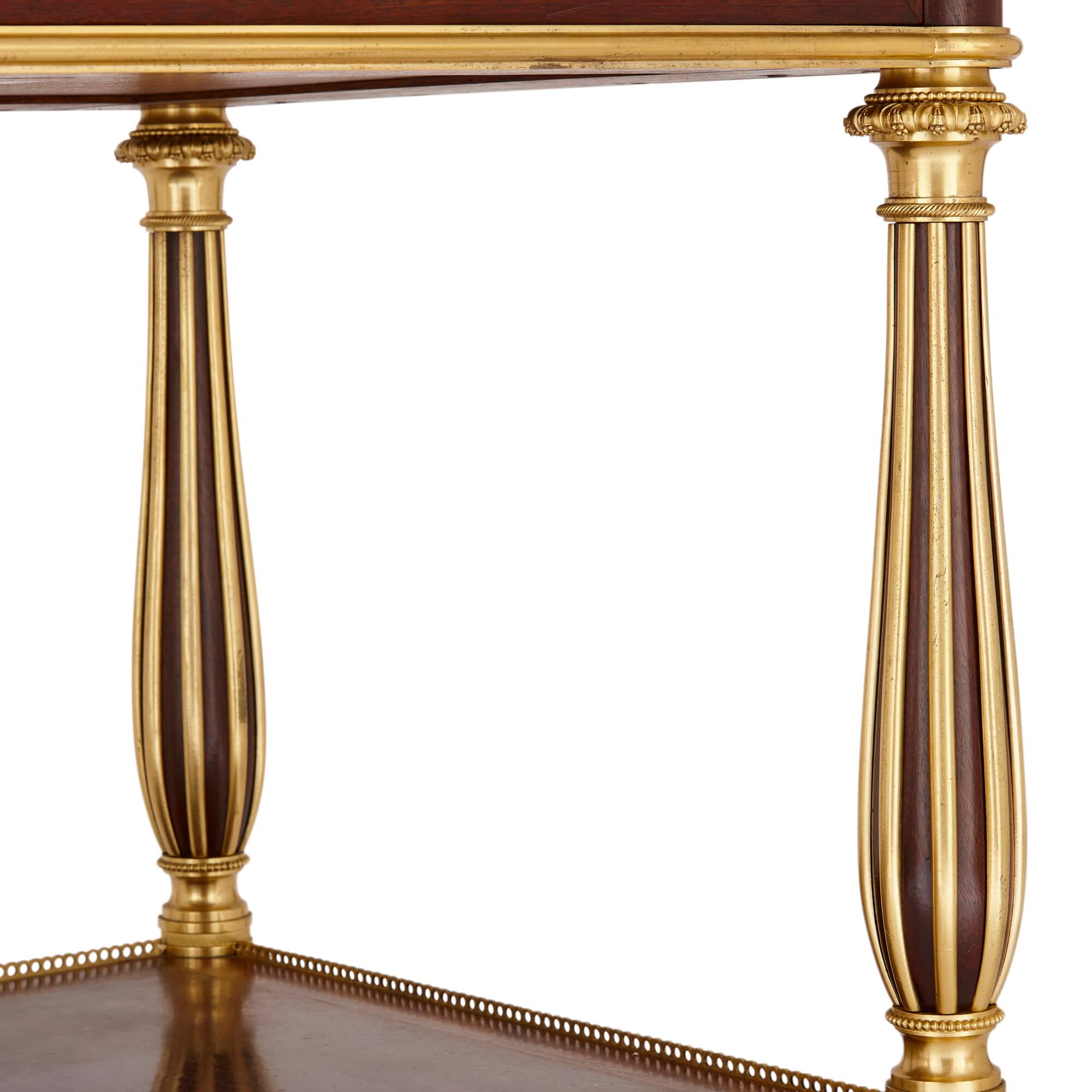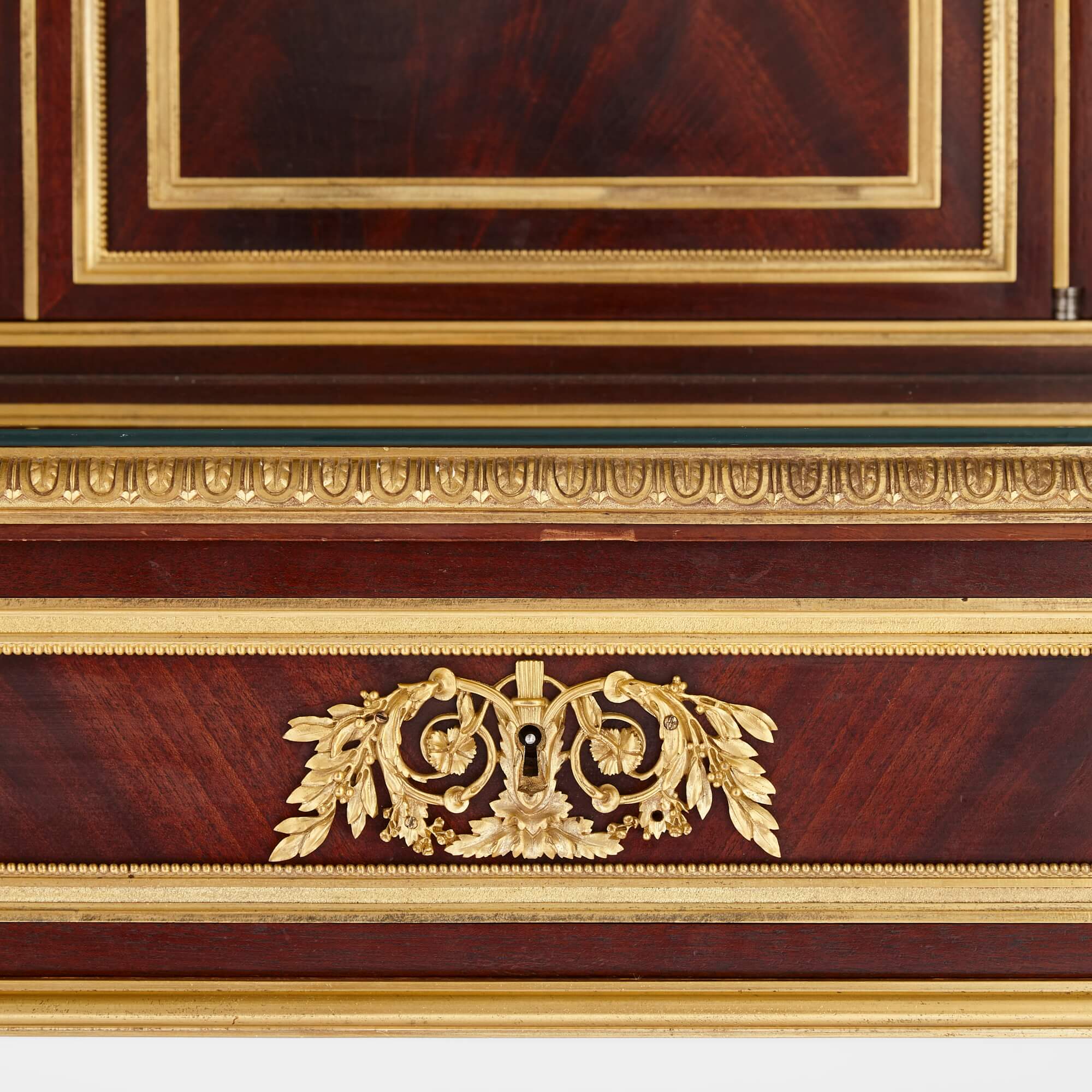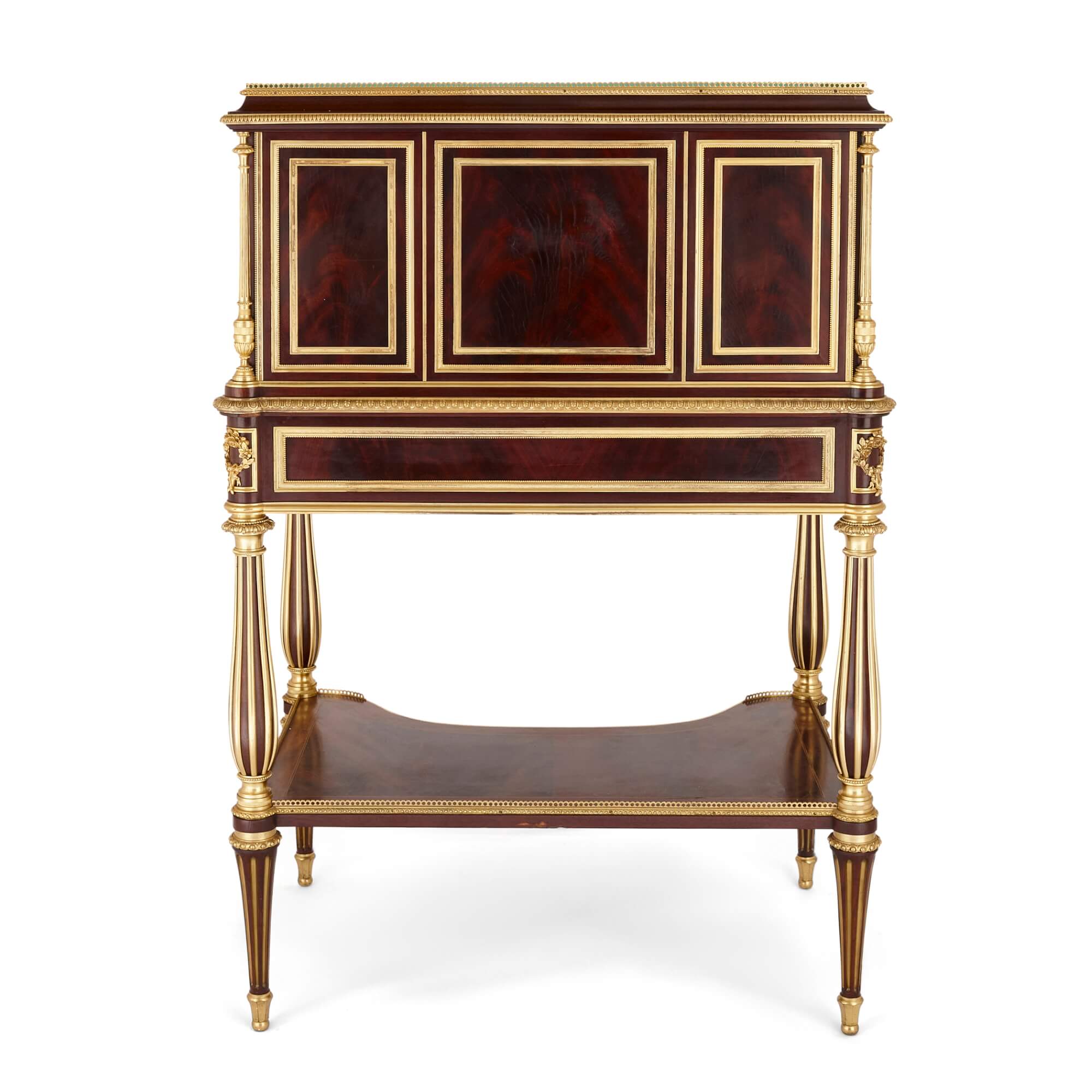This bonheur du jour, also known as a ladies’ writing desk, was magnificently crafted in late 19th century France. This type of writing table was first introduced in around 1760 in France and quickly became very popular among the elite. ‘Bonheur-du-jour’ translates from French to ‘happiness of the day’. Such a name could refer to the joy a lady would experience when writing letters to her family and friends. The design of this desk is after one crafted by Adam Weisweiler (German, 1744-1820) in the late 18th century, whose pieces were acquired by international royalty such as Marie Antoinette.
The writing desk is surmounted by a slender lockable cabinet topped by a pierced ormolu gallery above a cavetto frieze. With a twist of a key, an unusual set of doors opens to reveal one adjustable shelf. While the design makes it seem there are three doors, the clever construction includes one long twin hinged twin panelled door and one short panelled door. The desktop below is covered with a glass panel perfectly matching the shape of the desk.
The long, rectangular secretaire drawer under the desk is decorated with a pared-down ormolu border and an ornate escutcheon. When opened it reveals a plethora of cleverly designed compartments. Four mahogany drawers with ormolu handles flank a central rectangular compartment. A gilt tooled leather surface extends in front, the drawer front collapsing to increase the desk space. The four corners around the drawer are mounted with ribbon-tied floral wreath mounts.
Four reeded baluster shaped legs join the top construction with the under tier, which adds another useful feature to the piece. Made from mahogany it features a pierced ormolu gallery.
The bonheur du jour stands on four fluted tapering toupie feet terminating with ormolu sabots.
The bright gold colouring of the refined ormolu detailing accentuates the dark brown wood and the naturally formed grain patterns.
Showcasing clever furniture design of the 19th century, this bonheur du jour would make a remarkable addition to, for example, an office space, where one could lock away their work at the end of the day.




